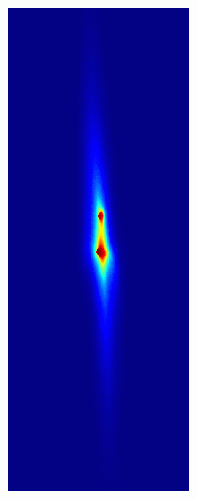Written by Sarah Perdue
University of Wisconsin–Madison physicists have made one of the highest performance atomic clocks ever, they announced Feb. 16 in the journal Nature.
Their instrument, known as an optical lattice atomic clock, can measure differences in time to a precision equivalent to losing just one second every 300 billion years and is the first example of a “multiplexed” optical clock, where six separate clocks can exist in the same environment. Its design allows the team to test ways to search for gravitational waves, attempt to detect dark matter, and discover new physics with clocks.

“Optical lattice clocks are already the best clocks in the world, and here we get this level of performance that no one has seen before,” says Shimon Kolkowitz, a UW–Madison physics professor and senior author of the study. “We’re working to both improve their performance and to develop emerging applications that are enabled by this improved performance.”
Atomic clocks are so precise because they take advantage of a fundamental property of atoms: when an electron changes energy levels, it absorbs or emits light with a frequency that is identical for all atoms of a particular element. Optical atomic clocks keep time by using a laser that is tuned to precisely match this frequency, and they require some of the world’s most sophisticated lasers to keep accurate time.
By comparison, Kolkowitz’s group has “a relatively lousy laser,” he says, so they knew that any clock they built would not be the most accurate or precise on its own. But they also knew that many downstream applications of optical clocks will require portable, commercially available lasers like theirs. Designing a clock that could use average lasers would be a boon.

In their new study, they created a multiplexed clock, where strontium atoms can be separated into multiple clocks arranged in a line in the same vacuum chamber. Using just one atomic clock, the team found that their laser was only reliably able to excite electrons in the same number of atoms for one-tenth of a second.
However, when they shined the laser on two clocks in the chamber at the same time and compared them, the number of atoms with excited electrons stayed the same between the two clocks for up to 26 seconds. Their results meant they could run meaningful experiments for much longer than their laser would allow in a normal optical clock.
“Normally, our laser would limit the performance of these clocks,” Kolkowitz says. “But because the clocks are in the same environment and experience the exact same laser light, the effect of the laser drops out completely.”
The group next asked how precisely they could measure differences between the clocks. Two groups of atoms that are in slightly different environments will tick at slightly different rates, depending on gravity, magnetic fields, or other conditions.
They ran their experiment over a thousand times, measuring the difference in the ticking frequency of their two clocks for a total of around three hours. As expected, because the clocks were in two slightly different locations, the ticking was slightly different. The team demonstrated that as they took more and more measurements, they were better able to measure those differences.
Ultimately, the researchers could detect a difference in ticking rate between the two clocks that would correspond to them disagreeing with each other by only one second every 300 billion years — a measurement of precision timekeeping that sets a world record for two spatially separated clocks.